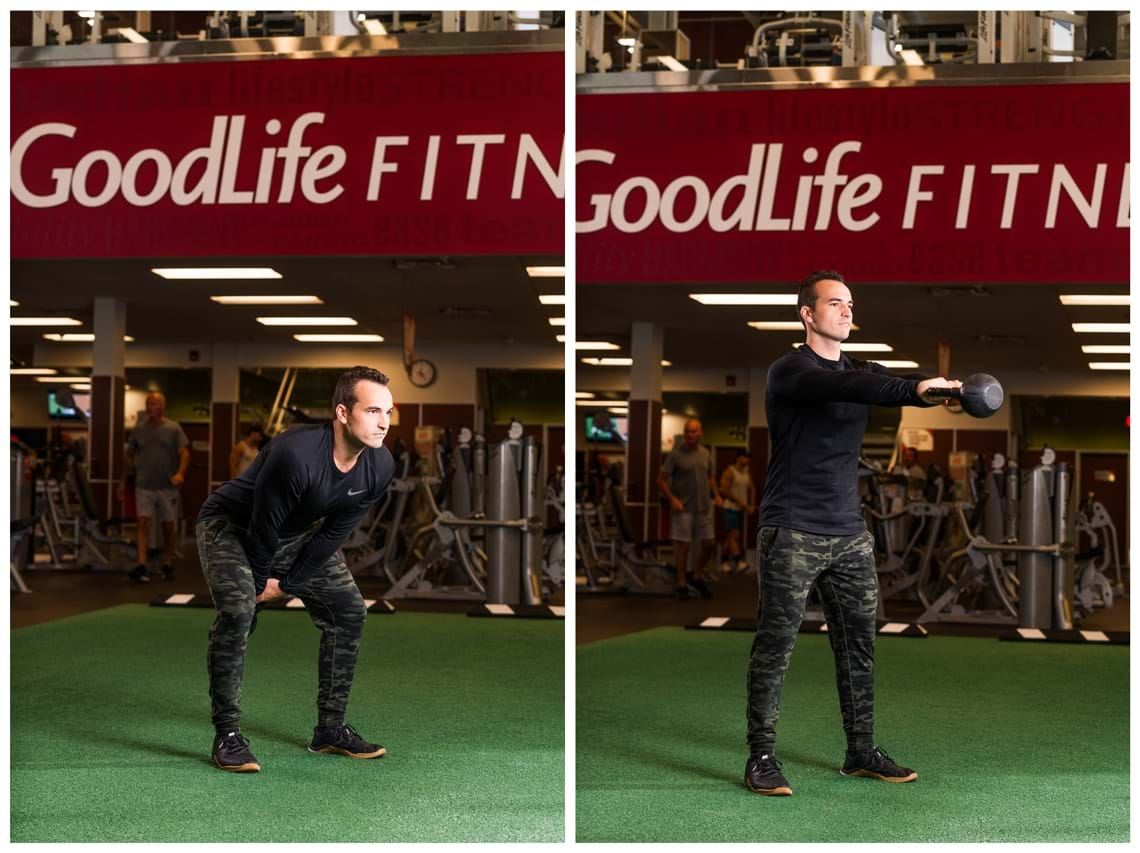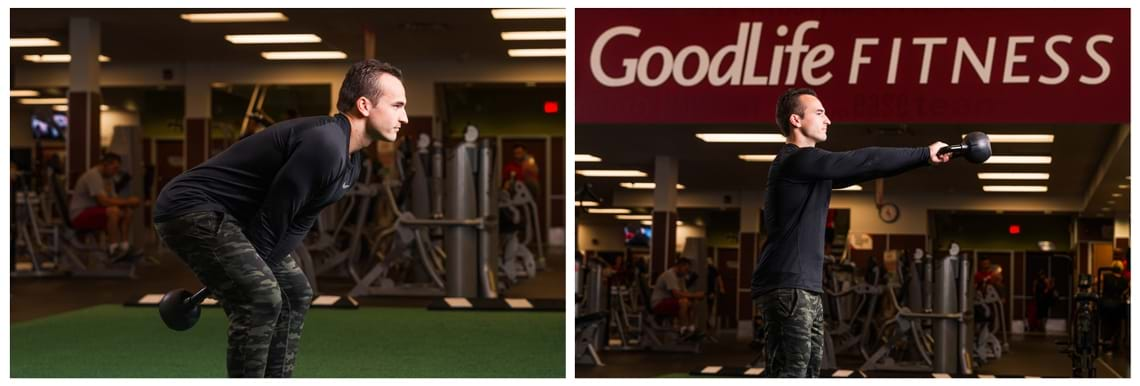Although kettlebell swings are a strength training staple, performing this movement flawlessly takes practice and skill. When done correctly, the kettlebell swings can build total-body strength, explosive power and balance, while still improving endurance and stamina.
Mastering the kettlebell swing means understanding that although you hold onto the kettlebell with your hands, you don’t swing with your arms—it’s all in the hips. To properly swing a kettlebell, you’re mostly using your lower body, specifically your hamstrings and glutes. Both of these muscles are capable of moving big weight and burning a massive number of calories, making the kettlebell swing a key strength training staple with enhanced weight loss properties.

How to master the two-arm or Russian kettlebell swing
- Start by standing tall, gripping the kettlebell loosely with long arms.
- Squeeze your shoulder blades together and engage your core before softening your knees and hinging at the hips, all while maintaining a neutral spine.
- Shift your bodyweight into the heels and glutes before pushing through your heels and thrusting forward with the hips to swing the kettlebell upward from your quads.
- Contract your core, snap your hips and squeeze your glutes to bring the kettlebell to chest height.
- Shift your weight back into your heels as you let the kettlebell descend naturally in a pendulum motion, landing slightly behind your body.
- Ready your body for the next rep by allowing the kettlebell to fall back in between the legs, hinging at the hips and loading both the hamstrings and the glutes with weight.
After a few repetitions focused on the technique, your kettlebell swings should be more fluid and pendulum-like without definitive stops or rest between repetitions.

Common mistakes
- Too much bend in the knees: It’s a swing, not a squat. Drive from the legs and hips to maintain an explosive thrust instead of an up-and-down squat-like movement.
- Swinging the kettlebell too low: Don’t let the weight fall too low to the ground. If the kettlebell is scraping across the floor and pulling your hands between your knees, you’re going too low into the movement.
- Using too much of the upper body to move the weight: Using the upper-body to lift the kettlebell increases your chance of developing back pain. You want all the power to come from the posterior chain, specifically the hamstrings and glutes.
